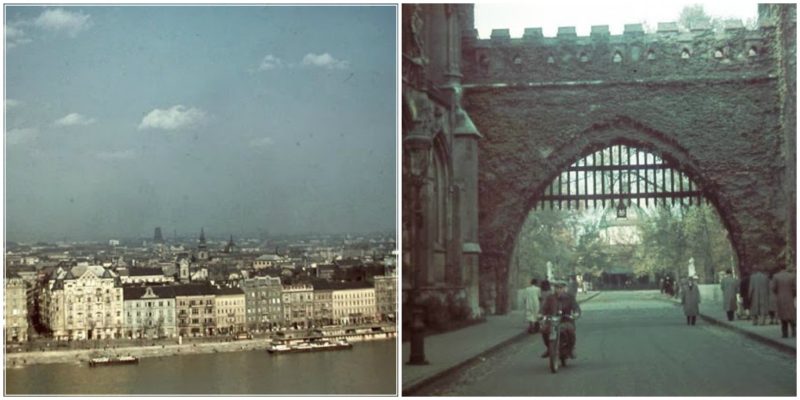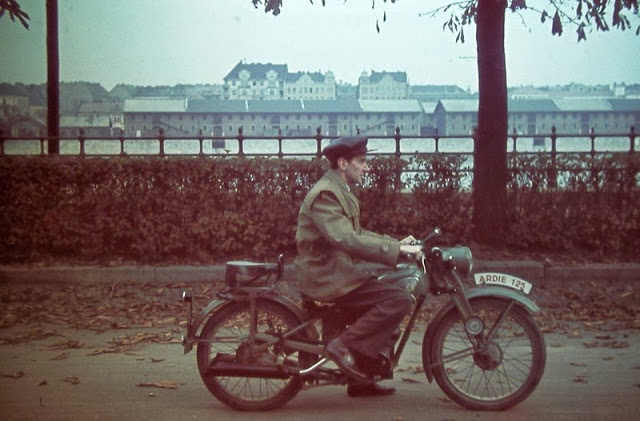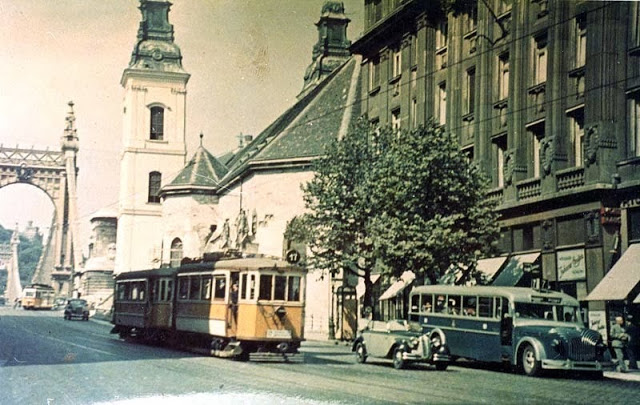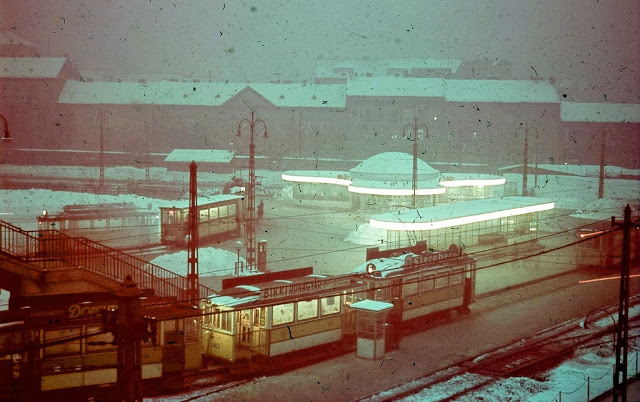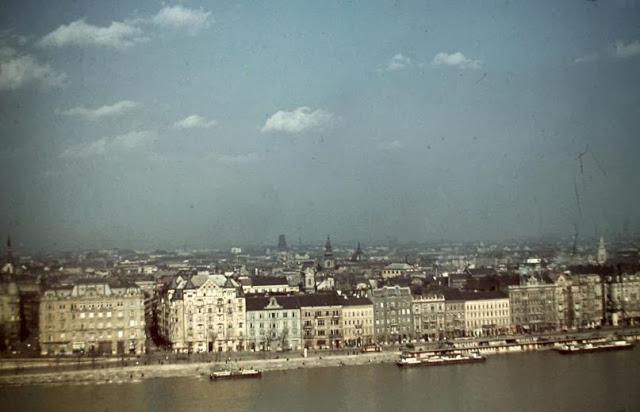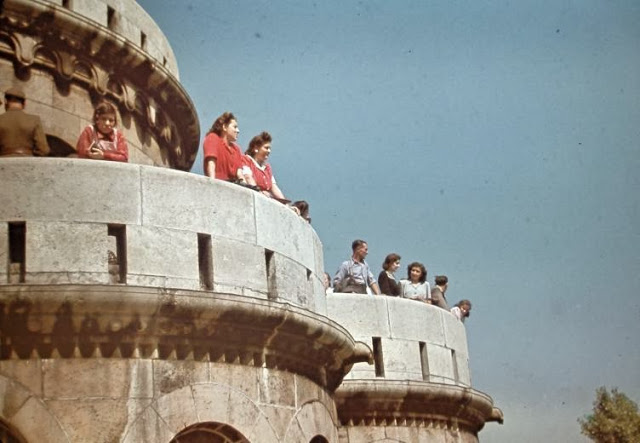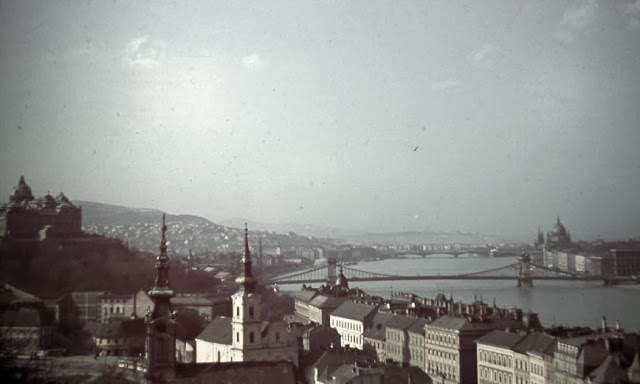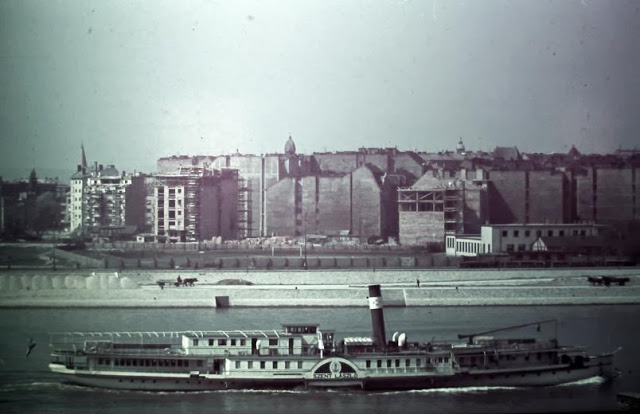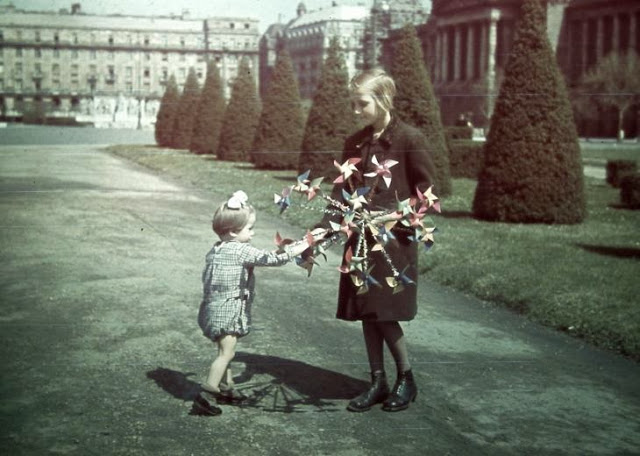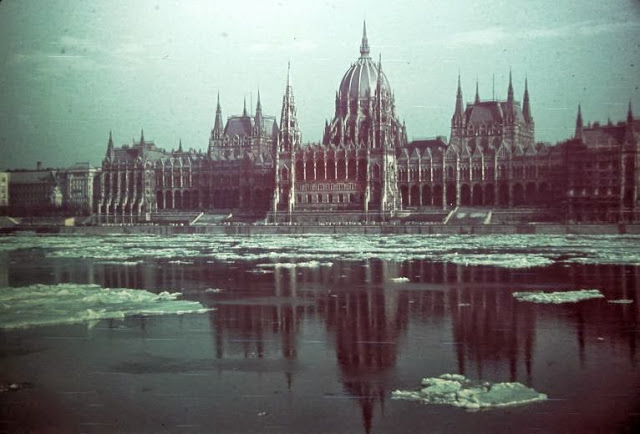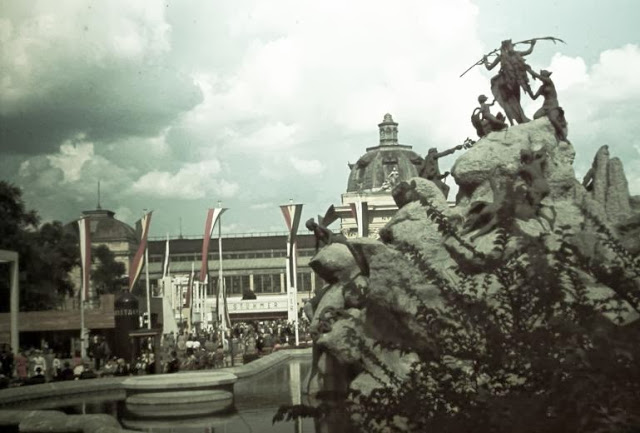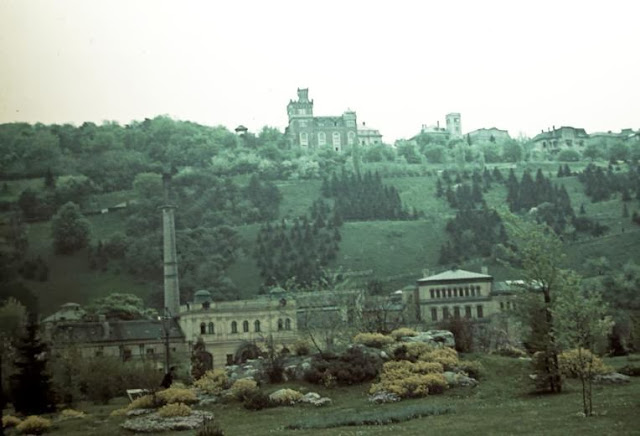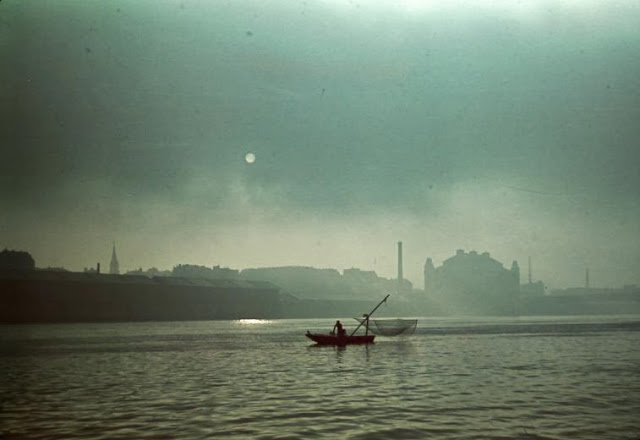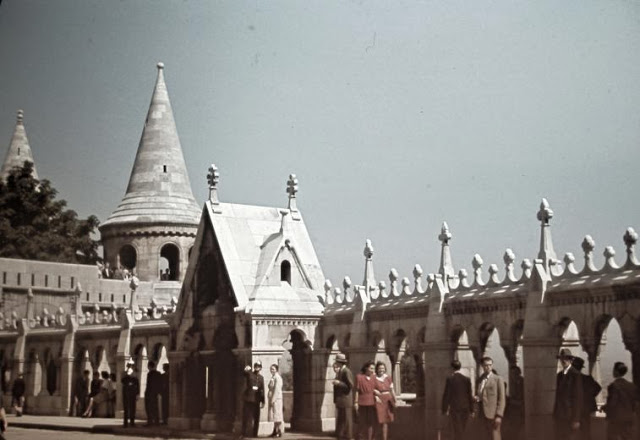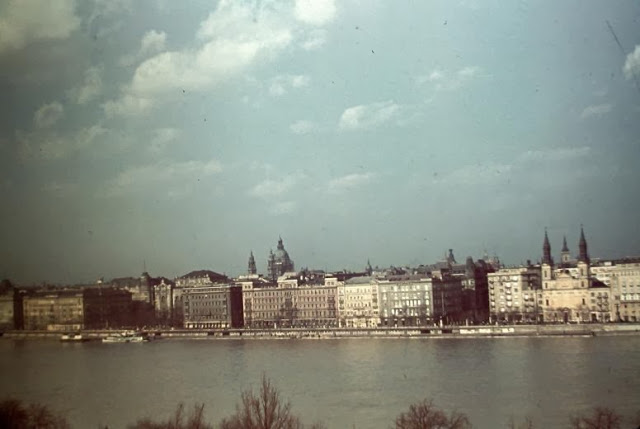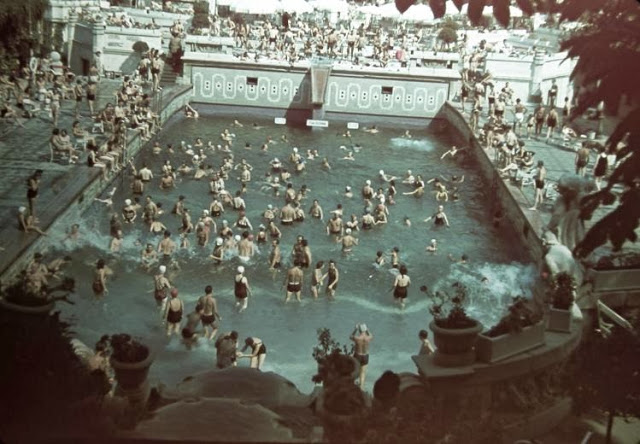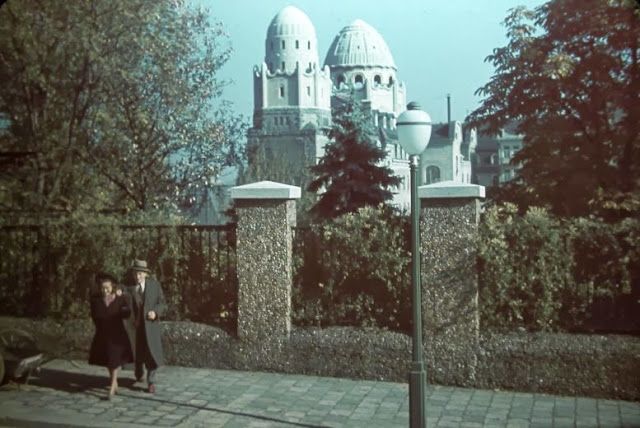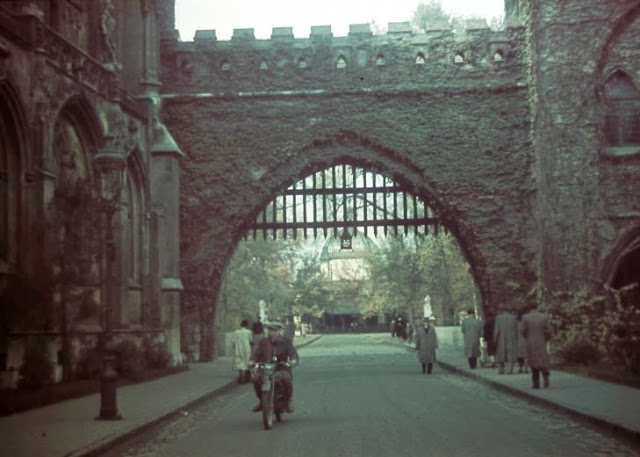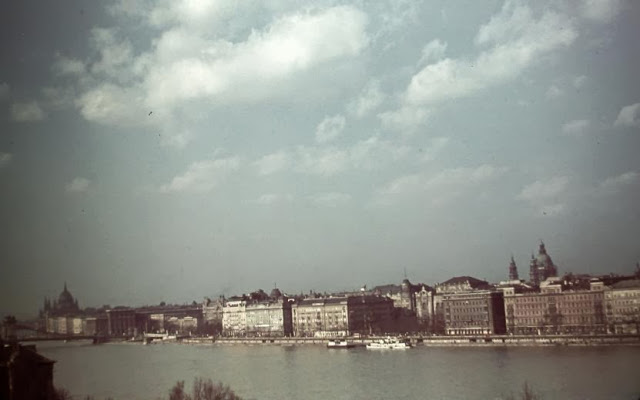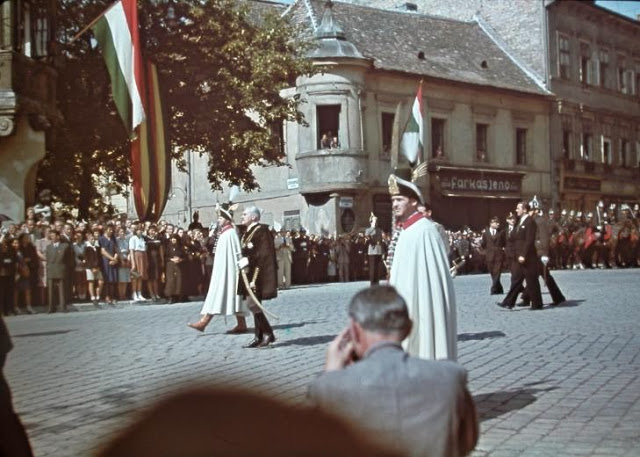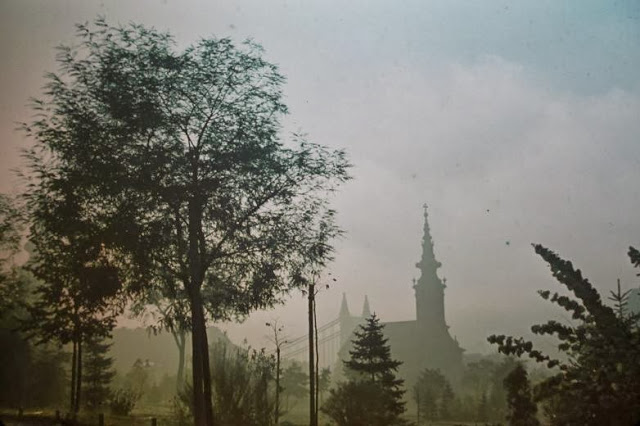At the beginning of the 20th century the cultural efflorescence and sparkling energy of abundance and well-being of Budapest rivaled that of Vienna and its café society that of Paris, a belle époque extinguished by World War I. In the aftermath of World War I which had led to the collapse of the Austro-Hungarian Empire, half of the Hungarian population was cut away from Hungary by the Treaty of Trianon and made part of surrounding nations. In 1918-19, Budapest was shaken by two revolutions: the Aster Revolution brought about the Hungarian Democratic Republic, which was followed by the Hungarian Soviet Republic, a short-lived Communist regime led by Béla Kun, followed by two years of White Terror. The Hungarian–Romanian War of 1919 ended with the Romanian occupation of parts of Hungary proper, including Budapest in August 1919, and the establishment of the Kingdom of Hungary, led by Miklós Horthy, the self-appointed regent for the exiled King Karl IV (see the conflict of Charles IV with Miklós Horthy). His domain and regency was characterized by gala balls as well as hunger marches by the poor, of nationalism and anti-Semitism by inheritance, again inherited by joining the wrong side (the Nazis), who promised the sweet reward of re-joining of the Hungarian nation as a whole in the post-Trianon era. Yet Horthy was considered a moderate compared to the fascistArrow Cross Party, whose power grew as World War II raged across Europe.
Anticipating and knowing about Horthy’s communication with the Allies and possible defection from the Axis alliance in 1944, the Nazis staged “Operation Panzerfaust”, a coup against Horthy, and installed an Arrow Cross government under Ferenc Szálasi to make allowance for the unobstructed massacre of the Jews of Budapest.
This is a beautiful color photo collection of Life in Budapest, Hungary in 1940.
Take a look:
Before World War II, approximately 200,000 Jews lived in Budapest, making it the center of Hungarian Jewish cultural life. In the late 1930s and early 1940s, Budapest was a safe haven for Jewish refugees. Before the war some 5,000 refugees, primarily from Germany and Austria, arrived in Budapest. With the beginning of deportations of Jews from Slovakia in March 1942, as many as 8,000 Slovak Jewish refugees also settled in Budapest. Hungary was allied with Nazi Germany. Despite discriminatory legislation against the Jews and widespread antisemitism, the Jewish community of Budapest was relatively secure until the German occupation of Hungary in March 1944 (Operation Margarethe). With the occupation, the Germans ordered the establishment of a Jewish council in Budapest and severely restricted Jewish life. Apartments occupied by Jews were confiscated. Hundreds of Jews were rounded up and interned in the Kistarcsatransit camp (originally established by Hungarian authorities), 15 miles (24 km) northeast of Budapest. Between April and July 1944, the Germans and Hungarians deported Jews from the Hungarian provinces. By the end of July, the Jews in Budapest were virtually the only Jews remaining in Hungary. They were not immediately ghettoized. Instead, in June 1944, Hungarian authorities ordered the Jews into over 2,000 designated buildings scattered throughout the city. The buildings were marked with Stars of David. About 25,000 Jews from the suburbs of Budapest were rounded up and transported to the Auschwitz-Birkenau extermination camp. Hungarian authorities suspended the deportations in July 1944, sparing the remaining Jews of Budapest, at least temporarily. Many Jews searched for places of hiding or for protection. They were aided by foreign diplomats like Nuncio Angelo Rotta, Raoul Wallenberg, Giorgio Perlasca, Carl Lutz,Friedrich Born, Harald Feller, Angel Sanz Briz and George Mandel-Mantello who organized false papers and safe houses for them. These actions saved tens of thousands of Jews.
Photos Belong to FORTEPAN©
